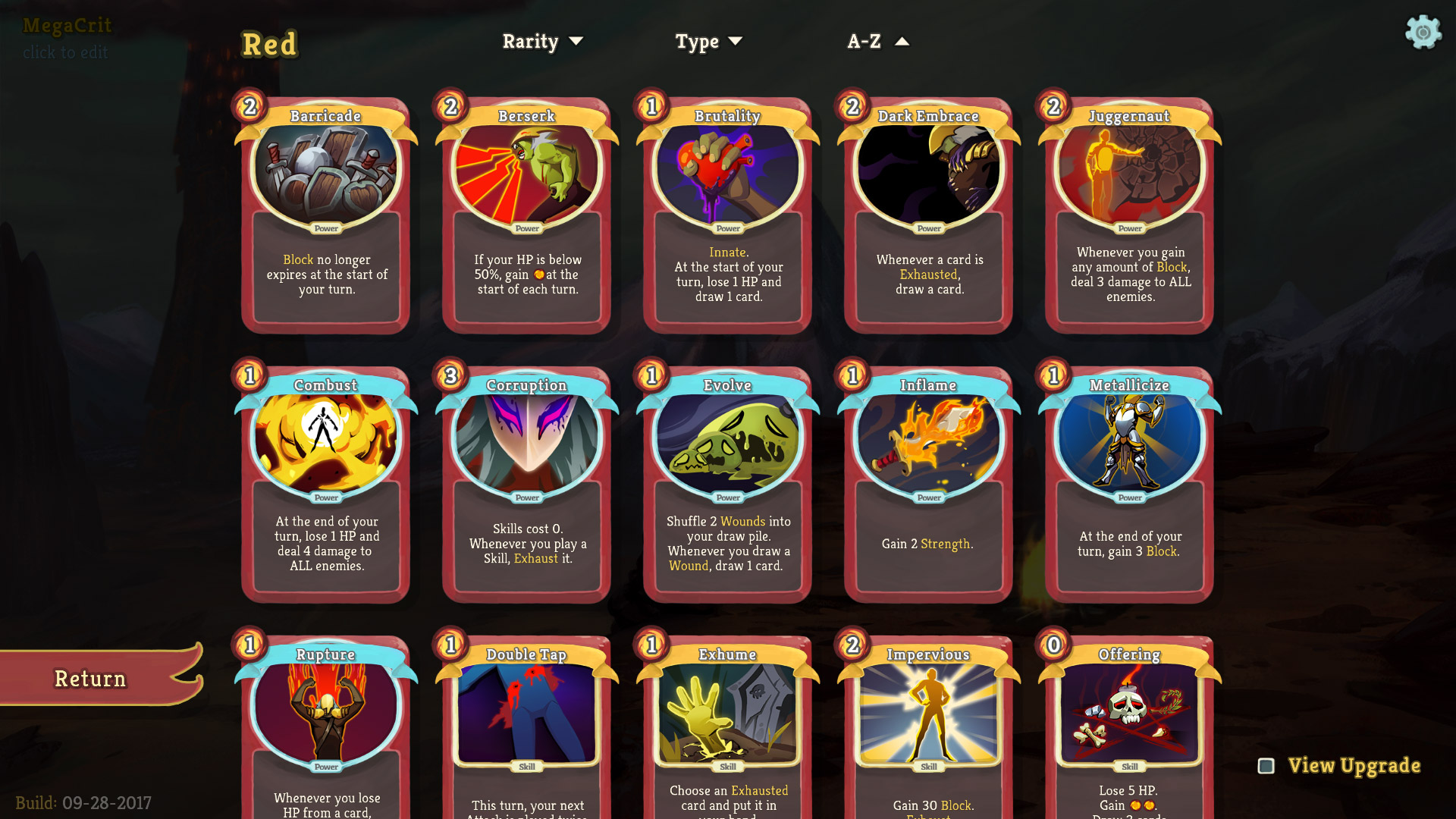The true sign of a good game is one that can release in the video game avalanche that is November and still have people talking about it well into February. Mega Crit Games’ Slay the Spire is one such game. This cool blend of rogue-like RPG and collectible card game is as clever as it is charming and has been among Steam’s best selling games for weeks now, but just glancing at screenshots of it in action might not leave much of an impression. Hopefully this piece will convince you why Slay the Spire is definitely worth paying attention to.
What do you do in Slay the Spire?
You guide one of the two available characters, The Ironclad and The Silent, up into the treacherous labyrinth of the spire in order to kill the big bad bosses of each map. Of course, these maps are crawling with all manner of traps and beasts looking to stop your progress.
What does Slay the Spire play like?
You spend a good amount of Slay the Spire on a map, moving from node to node like a board game. Each node has something to interact with. Monsters and elite monsters, treasure, camps to rest at, etc. are all among the options. The rub is that they are on branching tracks with strict pathways to follow, so looking ahead at the potential encounters is a big factor in choosing the right path to navigate. Once you move forward, you cannot go back.
If you’ve played games like FTL or Skyshine’s Bedlam, then you’ll recognize this format immediately.

Where do cards come into play?
When landing on monster spaces, you’ll be ushered into battle. Battles are turn-based AND card-based. You have a handful of cards, each with an energy cost and an effect. With your limited energy pool, you choose cards to play that will help you attack and debuff foes, or buff and defend against them. When your turn ends, the hand is discarded, and you draw a new one next turn.
That sounds complicated.
It’s complex, but the basics aren’t difficult to grasp. Identifying good card combinations, adapting to gradually more difficult enemies, managing your slow-to-recover life pool, making the most out of random relics and potions you’ll find on your journey — that’s where it gets complicated.
How do you get more cards?
Every victory in battle gives you a smattering of rewards, including your choice of three random cards. Your choice gets added to your deck immediately and will be available for your next combat encounter. You can also buy cards from the merchant, who will be at one of the randomly generated map nodes. Finally, you unlock a new range of cards every time you level up with experience that is tallied at the end of every run.
Cards that you gain stay in your deck from run to run, and it actually costs you gold to remove them from your deck. This forces you to really consider the ratio between defensive, supportive, and offensive cards you toss into your deck.

How different are the cards between characters?
The Ironclad and The Silent are very different sorts of characters, with a varied array of strategies that are unique to each of them.
As the archetypal knight, The Ironclad is a stoic warrior that would gladly trade his own health and well-being to do overwhelming damage. His decks usually orbit around the concept of putting your life at risk for great reward, like opening an opponent up to take massive damage next turn. It’s easy to get carried away with the killing, though, and some active restraint is necessary to make him work.
The Silent is a roguish master of shenaniganry. He is illusive and cunning, valuing his own self-defense above all else. The Silent also has a knack for planning, and is very good at killing the enemy in a game of inches, slowly whittling them down with Poison, or stacking up energy buffs and going all out next turn. They also cycle through their decks a lot, meaning they more often draw the card’s they’re looking for. But one well placed status effect can throw them off their game. When they’re not in control, they are exposed.
This sounds pretty cool, but why cards?
I like the card game aspect. It gives an element of chance to each draw, and provides another sort of skill to develop outside of your standard turn based battle. I also love the way some of the way the negative effects interact with you in a card drawing fashion. Specifically, some effects, like Wound, add a card into your deck that is basically unplayable. Not only can it hinder your hand draws, it can interfere with strategies that call for having specific sorts of cards in your hand.

What else gives runs differentiation?
Besides the randomness of the maps, the different tactics required between characters, the various playstyles within each of the decks, and the ever-growing collection of cards you’ll come to unlock and gain, there are relics.
Relics are items that you will collect either in mystery events, treasure chests, or the merchant, that add a passive effect over all the stuff you have. These effects could be as simple as gaining more max HP, or as nutty as when there are no cards in your hand, draw a card. Basically, the Risk of Rain approach. Each character has a starting relic that further accentuates that specific character’s philosophy.
Ok, I’m in. When does this come out?
Slay the Spire is available in Early Access on Steam and has been for a while. A full release of the game, including the addition of another character, is slated to arrive sometime this year. If you need more info, check out (and/or contribute to) the Official Slay the Spire Wiki!
